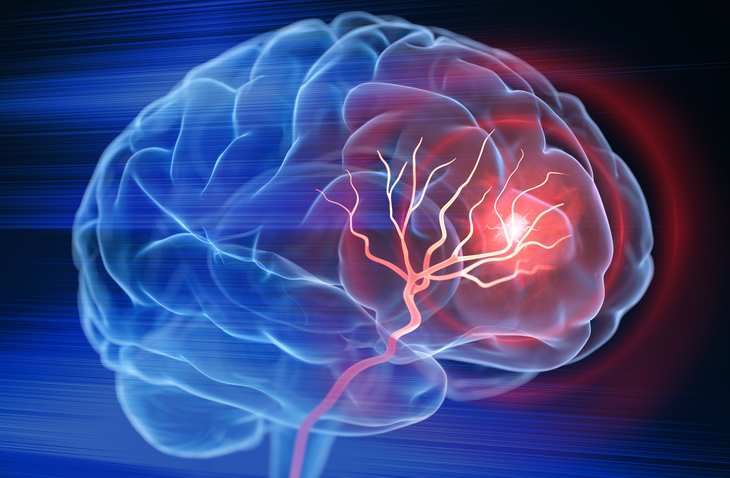Dr. Maria Maccecchini, CEO, Annovis Bio: Developing Novel Treatments for Neurodegenerative Disorders
By Rob Dillard - Last Updated: April 27, 2023As the world’s aging population continues to grow, neurodegenerative diseases have emerged as one of the biggest unmet needs. Annovis Bio is looking to meet this challenge developing novel treatments to combat neurodegenerative diseases by addressing nerve cell death, the key mechanism by which neurodegenerative disease occurs.
DocWire News spoke with Dr. Maria L. Maccecchini, Founder, President, and CEO of Annovis. Dr. Maccecchini spoke to us about the company, and its lead compound, bentanetap, a potential game-changer in the battle against neurogenerative diseases like Alzheimer’s Disease, and Parkinson’s Disease.
DocWire News: Can you tell us about yourself, and why you founded Annovis Bio?
Dr. Maria Maccecchini: I have been interested in the brain for a very, very long time. I actually when I was very young, looked at termites and I did surgeries on termite’s brains, because depending on which piece of the brain you destroyed, remember, all we could do is cauterize one piece at the other, they would either become adults or they would stay forever infantile. Now, realistically, that is a very terrible way to control termite population, because you have to actually do surgery on every single termite so it doesn’t molt and it doesn’t become an adult. But I thought that was fascinating. I think I was 18 when I was doing termite brain surgeries.
So I always felt the brain was a real black box, but it was what forms us. Without a brain, we wouldn’t exist. It doesn’t matter how great we look, how slim we are, how much money we have. We would just be a vegetable. And so understanding the brain for me was very, very important.
So my first company, well, I first studied neuroscience biochemistry, and then I went to a company. I did some brain research, mostly peptides, like conotoxin, botulinum toxin, and all the toxins that affect the brain. And then I got into protecting the nerve cells, and that was my first company. In my first company. I wanted to protect nerve cells from dying in stroke. That didn’t quite work that well, because as you know, there is still no drug for stroke on the market. But we reshuffled ourselves and we sold the company for genomics. We are a bunch of genes. So the investors did well. I did well, but I wasn’t happy because really, I had not figured out how to do something that protects nerve cells from dying.
So I found this compound that seemed to maybe under certain circumstances, not quite sure, but it could potentially protect nerve cells from dying. And so that was almost 13 years ago I started working on it, and today I know for sure that it protects nerve cells from dying.
Can you talk to us about Annovis’ drug candidate, and how it works?
It is originally I thought, or what I licensed from the NIH, wasn’t really telling me how it worked. All we knew is that it inhibited one neurotoxic protein that today we know is plaque. As we were working on it, it turned out … And this has nothing to do with us. It’s just the way science has gone … that in the brain of an Alzheimer and Parkinson’s patients, there are a lot of different neurotoxic protein. Not just, say, beta and tau, which are the most commonly mentioned, but there’s also [inaudible 00:03:00] and there’s TDP-43. These proteins all kill nerve cells. Now, what our drug does is it inhibits them all. How can it work on four totally different proteins? It turns out that these proteins have the same regulatory mechanism, which means that they are made the same way. While they’re four different proteins, their mechanism and how it’s made is identical, and our drug interferes with how they’re made. So because their regulatory mechanism is the same, our drug can act on all four, and it does inhibit neurotoxic proteins. And by doing so, it protects nerve cells from dying.
What exactly is the axonal transport, and why is it so important for treating Alzheimer’s and Parkinson’s disease?
Well, axonal transport is enormously important because we have a brain. Nerve cells reside in the brain, but they have to go to our periphery. In order for me to feel my fingers, my fingers have to react with the brain and my brain has to tell my finger, “Move.” If the brain doesn’t do that and the fingers don’t feel it, we don’t function. So everything we do, the brain needs to connect to the periphery, and it does that by very long arms. So if the nerve cell sits here, the fingers are here. There is a very long arm that connects the nerve cell, the body, or the nerve cell with extremities. And that is true for everything.
If you think that in Parkinson’s people move slower, it’s because that speed of transmission of the nerve and how it communicates with its periphery is slow. In Alzheimer’s, the reasons people forget is that the information from here to here doesn’t function well and so people forget. So everything we do, be that seeing, talking, movement, thinking, brain cells have to communicate with each other. And if they do not communicate, first the function gets sluggish. Eventually the function dies, and that is when the nerve cell dies and then we lose the function.
Tell us about bentanetap, and its results in Phase II testing.
So buntanetap, we tested it in two phase two studies, one in Alzheimer’s and one in Parkinson’s patients. In Alzheimer’s, we only used 14 patients because we just wanted to see if it works. And in Parkinson’s, we used 54 patients because we wanted to have a more extended study and better understand if it works. Ideally we should have done 100 and 100, but it costs money. And so preliminary just to see if the drug works, we did a total of 70 patients. So in the 54 Parkinson’s patients, we saw in UPDRS, which is the normal, most commonly used scale to measure Parkinson’s, that it improved every step of the scale. It improved part two, part three, part four, and combined. What that means is that part two, people lived better. Part three, people moved better. And part four, the dopaminergic drugs worked better. We gave it on top of dopaminergic drugs. So we had excellent data in the UPDRS.
We also did a waste test. A waste test is not specific for Alzheimer’s or Parkinson’s, because it measures the speed and the concentration and the attention that you give to a task. What people have to do in two minutes is mark as many fields as possible with the correct number. And if people move faster, they will mark more fields. But if people think faster, they will also mark more fields. So we use the same test in Alzheimer’s and in Parkinson’s disease. And in that test, the data was even better. Parkinson’s patients did 30% better at all doses than before treatment and 35% better than placebo. So now we go to Alzheimer’s patients.
In Alzheimer’s patients, as I said, we only had 14 patients, so that’s a very small group, but to our big amazement, people did 30% better, and again, over 30% better in the two tests. So there we did a [inaudible 00:07:40], which is again, the most accepted Alzheimer’s test, and patients after 25 days did 30% better. And they also did the waste test, which in Alzheimer’s is not speed of moving, but the speed of thinking. And again, there they also did better.
So we went to the FDA with our Parkinson’s data, and we told the FDA, “We have really good Parkinson’s data. It’s only 54 patients. Can we go into phase three?” And they said, “Yes.” So in May, June, we will put our first Parkinson’s patients into phase three.
The FDA gave green light for a phase III study of buntanetap in Parkinson’s. Please, give us more details.
So we had only asked for the same study we did in phase two, because we are a little risk averse. And not risk averse, but a little. I know that if we used the same patients we used in phase two and got such good data in one month, we should get just as good date in six months or 12 months if we used the same patient population. So we asked them for early Parkinson’s patients, which is Hoehn and Yahr one, two, and three, and they said, “Great. Do that. But the second study, why don’t you do that it advanced?” And we will do that in advanced, but in advanced, there is a lot less literature. There are a lot less drugs that work. So we’ll do it in advanced, and I hope it works, but if it doesn’t work, we’ll still have the early.
Any closing thoughts?
Yeah. We also wanted to move Alzheimer’s I don’t mean to ever leave out Alzheimer’s. A, it’s the biggest unmet need, and B, our drug works in both. Why not do both? So as soon as we have started our Parkinson’s, we’ll move to Alzheimer’s. Yes.







 © 2025 Mashup Media, LLC, a Formedics Property. All Rights Reserved.
© 2025 Mashup Media, LLC, a Formedics Property. All Rights Reserved.